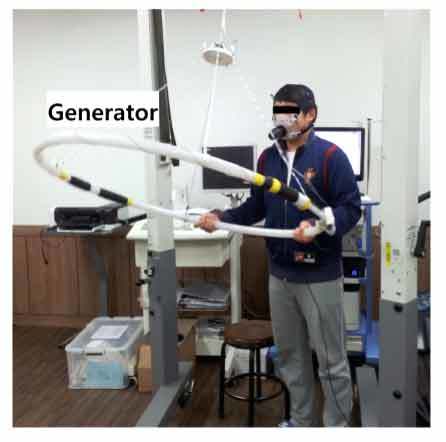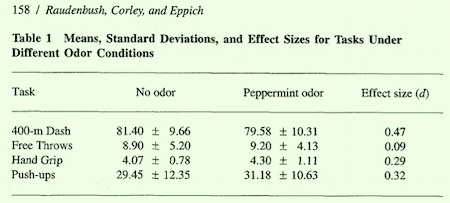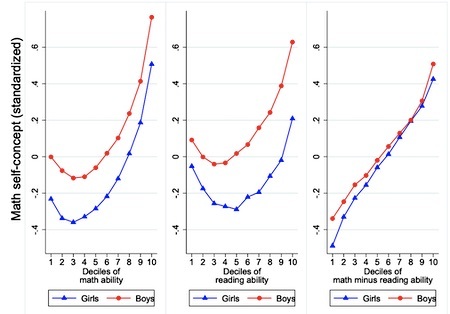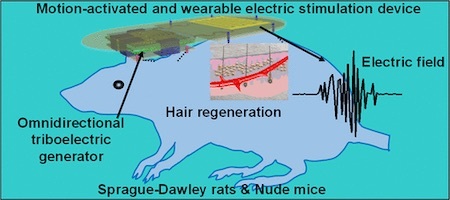Marc Abrahams's Blog, page 135
October 18, 2019
Method to Improve Rats’ Skill at Driving Cars [research study]
Driver education for rats—and how to improve it—is the subject of this new study:
 “Enriched Environment Exposure Accelerates Rodent Driving Skills,” L.E. Crawford, L.E. Knouse, M. Kent, D. Vavra, O. Harding, D. LeServe, N. Fox, X. Hu, P. Li, Clark Glory, and Kelly G. Lambert [pictured here], Behavioural Brain Research, epub 2019. The authors, at the University of Richmond, Virginia, explain:
“Enriched Environment Exposure Accelerates Rodent Driving Skills,” L.E. Crawford, L.E. Knouse, M. Kent, D. Vavra, O. Harding, D. LeServe, N. Fox, X. Hu, P. Li, Clark Glory, and Kelly G. Lambert [pictured here], Behavioural Brain Research, epub 2019. The authors, at the University of Richmond, Virginia, explain:
“In the current study, following preliminary research establishing that rats could be taught to drive a rodent operated vehicle (ROV) in a forward direction, as well as steer in more complex navigational patterns, male rats housed in an enriched environment were exposed to the rodent driving regime. Compared to standard-housed rats, enriched-housed rats demonstrated more robust learning in driving performance and their interest in the ROV persisted through extinction trials.”

October 16, 2019
Peppermint Odor in Sports
Although few organized sports focus on the smell of peppermint, a study published almost two decades ago zeroed in on the practice.
The study is: “Enhancing Athletic Performance Through the Administration of Peppermint Odor,” Bryan Raudenbush, Nathan Corley, and William Eppich, Journal of Sport and Exercise Psychology, vol.23, 2001, pp. 156-60. The authors, at Wheeling Jesuit University, explain:
“Forty athletes undertook a series of physical tasks under conditions of no-odor or peppermint odor. The peppermint odor condition resulted in increases in running speed, hand grip strength, and number of push-ups, but had no effect on skill related tasks such as basketball free-throw shots.”

October 14, 2019
Hula-Hoops as electrical generators [studies]
“We designed and implemented a human-powered generator which could provide large electricity by using and measured a human metabolic energy expenditure needed to operate it.“
– explain researchers Yoon-Ho Lim, Jeong-Jin Yeo, Mun-Ho Ryu and Yoon-Seok Yang of Chonbuk National University, Korea, who have, between them, developed a hula-hoop inspired human-powered electric generator.
Their experimental generator was able to provide 700 mW average output electricity. Further research, they say, will test its first application as an indoor and outdoor lighting appliance.
See: A Hula-Hoop Inspired Human-Powered Electric Generator and Estimation of Conversion Efficiency based on Quantitative Assessment of Metabolic Energy Expenditure Journal Of Engineering, Universitas Mercu Buana Yogyakarta, Vol. 19, pp. 125 – 130
Also see : A Hula-Hoop Energy-Harvesting System IEEE Transactions on Magnetics, Vol 47, #10, October 2011.
Research research by Martin Gardiner

October 9, 2019
New ammo in the boys/girls argument about who’s better at what: math and writing
There’s new paper ammunition for all combatants in the eternal anger-and-joy-filled war to explain why more men than women officially keep on studying mathematics.
The new paper that provides—that is itself—the ammunition is:
“Girls’ Comparative Advantage in Reading Can Largely Explain the Gender Gap in Math-Related Fields,” Thomas Breda and Clotilde Napp, Proceedings of the National Academy of Sciences, vol. 116, no. 31, July 30, 2019, pp. 15435-15440.
The authors, at the Paris School of Economics, at Paris-Jourdan Sciences-Economiques, and at Université Paris Dauphine, Paris Sciences et Lettres Research University, explain:
“we show that female students who are good at math are much more likely than male students to be even better in reading. As a consequence, the difference between 15-y-old students’ math and reading abilities, which is likely to be determined by earlier socialization processes, can explain up to 80% of the gender gap in intentions to pursue math-studies and careers.”
BONUS: An old song:
Tangential bonus to the bonus:

October 8, 2019
Another fan video about the Ig Nobel Prizes
October 7, 2019
Cyborg botany [study]
Over several million years, Venus Flytraps have been triggered to snap shut by flies. A new research project has shown they can also be triggered by a mouse – viz. a computer mouse [As shown in the video above].
The many and varied possibilities of creating ‘Cyborg Plants’ has been investigated by Harpreet Sareen of the Parsons School of Design, New York, and Pattie Maes of the Massachusetts Institute of Technology, who have, between them, created –
“… a series of [plant] hybrids with a complex intertwining of technological capabilities placed in association with the plant functions.”
See: Cyborg Botany: Exploring In-Planta Cybernetic Systems for Interaction in CHI EA ’19 Extended Abstracts of the 2019 CHI Conference on Human Factors in Computing Systems, Paper No. LBW0237.
BONUS: A full copy of the Ig Nobel Peace Prize-winning study ‘The dignity of living beings with regard to plants. Moral consideration of plants for their own sake’ (2008) from the Federal Ethics Committee on Non-Human Biotechnology (ECNH), Switzerland.
Research research: by Martin Gardiner

October 3, 2019
Double-Ig Nobel Prize Winner David Hu Awarded Science Communication Prize
David Hu, whose research on urination duration led to the 2015 Ig Nobel Physics Prize and whose research on why wombat poo is cube shaped led—three weeks ago—to the 2019 Ig Nobel Physics Prize, has this week been given a new honor:
The American Institute of Physics Announces 2019 Science Communication Award Winners
WASHINGTON, D.C., October 3, 2019 — Since 1968, the American Institute of Physics has recognized journalists, authors, reporters and other diverse writers for their efforts in science communication. The winners of the 2019 Science Communication Awards are announced….
The BOOK PRIZE [has]co-winners: David L. Hu for “How to Walk on Water and Climb Up Walls” (Princeton University Press) and Marcia Bartusiak for “Dispatches from Planet 3” (Yale University Press)…
—
BOOK CO-WINNER: “How to Walk on Water and Climb Up Walls” by David Hu
David Hu’s “How to Walk on Water and Climb Up Walls,” published by Princeton University Press, is one of two winners for this year’s book award. Hu’s book explores the astounding diversity and versatility of animal locomotion and how engineers are inspired by it as they design robotics. His team discovered how dogs shake dry, how insects walk on water and how eyelashes protect the eyes from drying.
Judges praised Hu’s book for featuring an interdisciplinary group of scientists working the front lines of their fields.
“A lot of people ask me where I get my ideas. I like to study things that relate to everyday life,” Hu said. “I get inspiration from raising my children. From a diaper change with my son, I was inspired to study urination. From watching my daughter being born, I was inspired by her long eyelashes.”
Hu earned a doctorate in mathematics and a bachelor’s degree in mechanical engineering from the Massachusetts Institute of Technology. He is currently a professor of mechanical engineering and biology as well as an adjunct professor of physics at Georgia Tech. He is a recipient of the National Science Foundation CAREER award for young scientists, the Ig Nobel Prize in physics, and the Pineapple Science Prize.
Hu’s previous work has been featured in The Economist, The New York Times, Saturday Night Live and Highlights for Children. He is originally from Rockville, Maryland.

Grow Hair with Electricity on Rats and Nude Mice
Hair growth was electrically prodded into happening in/on rats and in/on nude mice, using a clever gizmo, says a new study. The news potentially raises excitement about growing hair akin to the excitement about disease treatment raised by numerous reports of cancer being cured in mice.
The new study is: “Self-Activated Electrical Stimulation for Effective Hair Regeneration via a Wearable Omnidirectional Pulse Generator,” Guang Yao, Dawei Jiang, Jun Li, Lei Kang, Sihong Chen, Yin Long, Yizhan Wang et al., ACS nano, epub 2019.
The authors, at the University of Wisconsin, USA, at the University of Electronic Science and Technology of China, and at Shenzhen University, China, report:
“a universal motion-activated and wearable electric stimulation device that can effectively promote hair regeneration via random body motions was designed. Significantly facilitated hair regeneration results were obtained from Sprague–Dawley rats and nude mice. Higher hair follicle density and longer hair shaft length were observed on Sprague–Dawley rats when the device was employed compared to conventional pharmacological treatments…. This work provides an effective hair regeneration strategy in the context of a nonpharmacological self-powered wearable electronic device.”
(Thanks to Mark Benecke for bringing this to our attention.)

October 2, 2019
Wealth Inequality Among Snails
The economics of snails—specifically, what one might call “the economics of the shell game”—gets some data and hard thought in a new study.
“A Comparison of Wealth Inequality in Humans and Non-Humans,” Ivan D. Chase, Raphael Douady, and Dianna K. Padilla, Physica A: Statistical Mechanics and its Applications, 2019, 122962. The authors, at Stony Brook University, explain:
“Inequality in the distribution of material resources (wealth) occurs widely across human groups…. Here we present the first description of inequality in material resources in an animal population: the distribution of gastropod (snail) shells inhabited by the hermit crab Pagurus longicarpus. We find that the shell distribution for the crabs strongly resembles the characteristic form of wealth distribution in human groups. The amount of inequality in the crabs is more than that in some small-scale human groups but less than that in nations.”

October 1, 2019
Nathaniel Barr’s Ig Nobel lecture on Pseudo-Profound Bullshit
Nathaniel Barr did a five-minute-long talk about pseudo-profound bullshit, and then answered questions, two days after receiving the 2016 Ig Nobel Peace Prize.
That prize was awarded to Gordon Pennycook, James Allan Cheyne, Nathaniel Barr, Derek Koehler, and Jonathan Fugelsang for their scholarly study called “On the Reception and Detection of Pseudo-Profound Bullshit”. (The study was published in the journal Judgment and Decision Making, vol. 10, no. 6, November 2015, pp. 549–563.)
Here’s video of that talk, part of the Ig Informal Lectures, at MIT in Cambridge, Massachusetts.

Marc Abrahams's Blog
- Marc Abrahams's profile
- 14 followers







